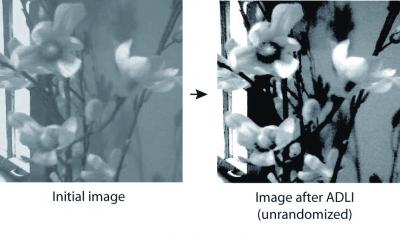The brain remains a complicated machine but researchers from the Center for the Neural Basis of Cognition (CNBC), a joint project of Carnegie Mellon University and the University of Pittsburgh have made progress in explaining why, when we notice a scent, the brain can quickly sort through input and determine exactly what that smell is.
To do it, they created a biologically inspired algorithm for analyzing the brain at work and they have described a mechanism called “dynamic connectivity,” in which neuronal circuits are rewired “on the fly” allowing stimuli to be more keenly sensed.
“If you think of the brain like a computer, then the connections between neurons are like the software that the brain is running. Our work shows that this biological software is changed rapidly as a function of the kind of input that the system receives,” said Nathan Urban, associate professor of biological sciences at Carnegie Mellon.

When a stimulus such as an odor is encountered, many neurons start to fire. When many neurons fire at the same time, the signals can be difficult for the brain to interpret. During lateral inhibition, the stimulated neurons send “cease-fire” messages to the neighboring neurons, reducing the noise and making it easier to precisely identify a stimulus. This process also facilitates accurate recognition of stimuli in many sensory areas of the brain.
In this project, Urban and colleagues specifically examine the process of lateral inhibition in an area of the brain called the olfactory bulb, which is responsible for processing scents. Until now, scientists thought that the connections made by the neurons in the olfactory bulb were dictated by anatomy and could only change slowly.
However, in this current study, Urban and colleagues found that the connections are, in fact, not set but rather able to change dynamically in response to specific patterns of stimuli. In their experiments, they found that when excitatory neurons in the olfactory bulb fire in a correlated fashion, this determines how they are functionally connected.
The researchers showed that dynamic connectivity allows lateral inhibition to be enhanced when a large number of neurons initially respond to a stimulus, filtering out noise from other neurons. By filtering out the noise, the stimulus can be more clearly recognized and separated from other similar stimuli.
“This mechanism helps to explain why you can walk into a room and recognize a smell that seems to be floral. As you continue to smell the odor, you begin to recognize that the scent is indeed flowers and even more specifically is the scent of roses,” Urban said. “By understanding how the brain does this, we can then apply this mechanism to other problems faced by the brain.”
Researchers converted this mechanism into an algorithm and used computer modeling to further show that dynamic connectivity makes it easier to identify and discriminate between stimuli by enhancing the contrast, or sharpness, of the stimuli, independent of the spatial patterns of the active neurons. This algorithm allows researchers to show the applicability of the mechanism in other areas of the brain where similar inhibitory connections are widespread. For example, the researchers applied the algorithm to a blurry picture and the picture appeared refined and in sharper contrast (see figure).
Coauthors of the study include Armen Arevian, a graduate student in the Center for Neuroscience at the University of Pittsburgh, and Vikrant Kapoor, a biological sciences graduate student at Carnegie Mellon. The study was funded through grants from the National Institute on Deafness and Other Communication Disorders, and the National Science Foundation.
The process is described in a paper in the January 2008 issue of Nature Neuroscience, and available online at http://dx.doi.org/10.1038/nn2030.






Comments